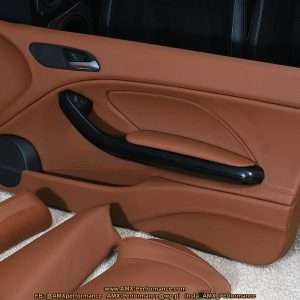The 1930s were a golden age for automotive design. Car interiors reflected the luxury and sophistication of the era. Let’s delve into the details.
Materials and Craftsmanship
The materials used in 1930s car interiors were of the highest quality. Think rich leather, polished wood, and gleaming chrome. Craftsmanship was paramount; Each detail was carefully considered and executed. The result was an interior that exuded opulence and comfort.
Did you know? Many 1930s car interiors featured hand-stitched leather upholstery. This added a personal touch and ensured exceptional durability.
Common Materials:
- Leather (often Connolly leather)
- Wood veneer (walnut, mahogany)
- Chrome accents
- Wool carpets
Design Elements and Features
Several design elements defined 1930s car interiors. Art Deco influences were prominent. Streamlined shapes and geometric patterns were common. The dashboard was a focal point. It often featured intricate gauges and controls. Seating was plush and comfortable. Passengers could relax in style.
Interesting fact: Many luxury cars of the 1930s included features like vanity mirrors and cigarette lighters. These were considered essential amenities for discerning drivers and passengers.
Key Features:
- Art Deco styling
- Intricate dashboards
- Plush seating
- Ample legroom
FAQ: 1930s Car Interiors
What types of leather were commonly used?
Connolly leather was a popular choice. It was known for its quality and durability. Other high-grade leathers were also used. They provided a luxurious feel.
How were the wooden elements finished?
Wood veneer was typically polished to a high gloss. This enhanced its natural beauty. Multiple coats of lacquer were often applied. This provided protection and a lasting shine.
Were there different interior color options?
Yes, a variety of color options were available. These ranged from classic blacks and browns to more vibrant hues. The choice of color often depended on the car’s exterior paint. It also depended on the owner’s personal preferences.
Restoration and Preservation
Restoring a 1930s car interior is a challenging but rewarding endeavor. It requires specialized skills and knowledge. Finding original materials can be difficult. However, skilled craftsmen can often replicate them. Preservation is key to maintaining the value and authenticity of these classic vehicles. Careful cleaning and maintenance are essential.
Challenges in Restoration:
- Sourcing original materials
- Matching original colors and finishes
- Repairing damaged wood veneer
- Reupholstering seats with period-correct fabrics
The key is patience. A meticulous approach will yield the best results. Don’t rush the process. Take your time to ensure every detail is perfect. The reward is a stunning interior that transports you back to the golden age of motoring.
Tip: When restoring a 1930s car interior, consult with experts who specialize in vintage automobiles. Their knowledge and experience can be invaluable.
The Influence on Modern Design
The design principles of 1930s car interiors continue to influence modern automotive design. The emphasis on luxury, comfort, and craftsmanship remains relevant. Many contemporary cars incorporate elements inspired by this era. Think of the use of premium materials and attention to detail. The timeless elegance of the 1930s endures.
Modern Interpretations:
- Use of high-quality leather and wood
- Emphasis on comfortable seating
- Integration of technology with classic design
- Streamlined dashboards and elegant controls
While technology has advanced significantly, the core values of good design remain constant. The 1930s serve as a reminder of the importance of creating interiors that are both beautiful and functional. It’s a legacy that continues to shape the automotive world.
Did you know? Some modern car manufacturers offer “heritage” or “classic” trim packages that specifically evoke the style of the 1930s.
The allure of 1930s car interiors lies in their timeless elegance and exceptional craftsmanship. They represent a bygone era of luxury and sophistication. Their influence can still be seen in modern automotive design. They serve as a reminder of the enduring power of good design.




